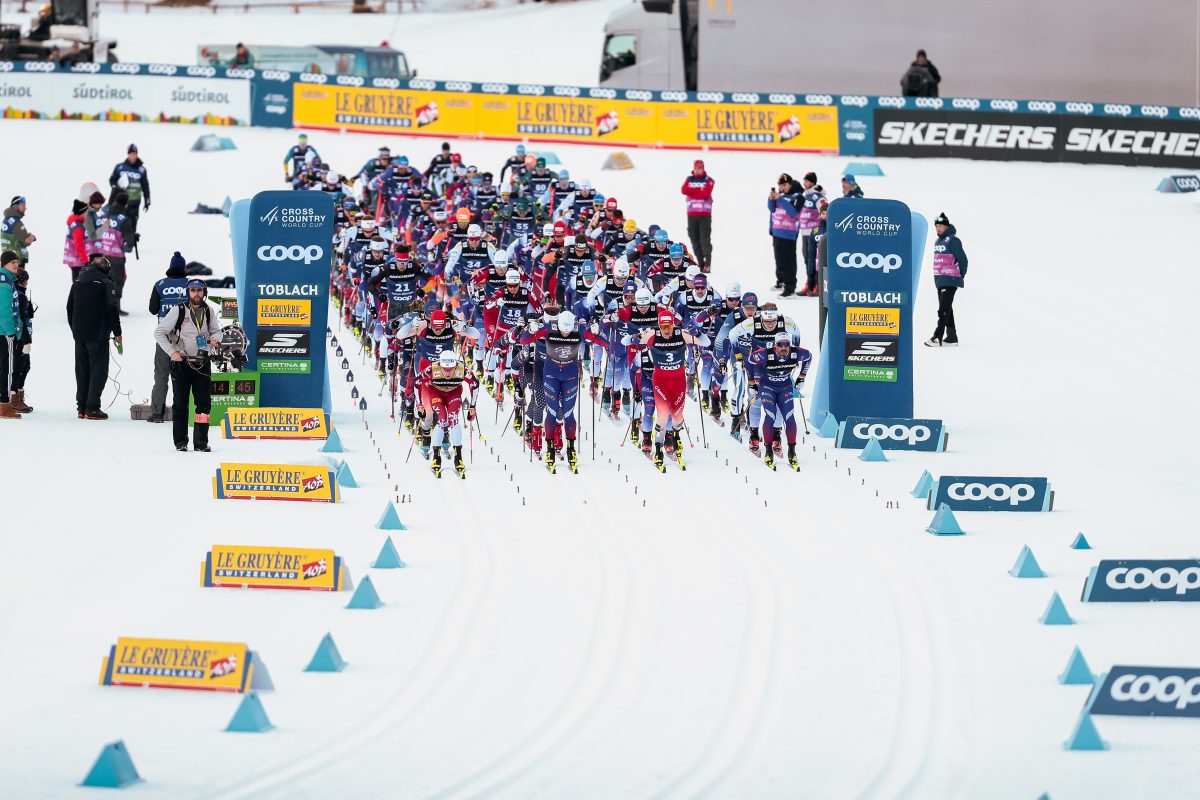
Last week, the National Cross Country Ski Education Foundation (NCCSEF) announced on its website that it is now calling itself the National Nordic Foundation (NNF). But changes at the foundation are more than just in name only. Nordic Combined now falls under their auspices, and over the next few weeks NNF will be testing out a new marketing and fundraising strategy.
The non-profit foundation was set up as NCCSEF in 1997 to help elite developing skiers access international racing opportunities. The money helps defray the costs athletes otherwise pay out of pocket for World Junior Championships, U23 Championships, and J1 Scandinavian Cup trips. Since its inception, the foundation has also incorporated World Championships, OPA Cups, and North American training camps to its list of funded projects, and offers travel reimbursement incentives to unfunded athletes if they podium at high-level events.
In June, NCCSEF added Nordic Combined to its fundraising umbrella, whose athletes face the same financial barriers to racing in Europe that Cross Country athletes do. In brainstorming fundraising strategies with U.S. Ski Team (USST) Nordic Combined coaches David Jarrett and Kerry Lynch, NNF Director David Knoop began wondering why the disciplines were doing things separately. “National Nordic Foundation” reflects the new inclusion of Nordic Combined, and together Knoop hopes that NNF will be able to better leverage itself in its effort to raise money for the broader Nordic pipeline.
“I’m excited about the inclusion [of Nordic Combined]; it doesn’t make sense having them create their own 501(c)(3), so linking up is a great idea. It will help both sports achieve their objectives,” agreed John Farra, who sits on the NNF Board of Directors.
The shortened acronym is also not insignificant. Over the course of his work for the foundation, Knoop said he would talk with people all the time that weren’t exactly sure what NCCSEF was or did. As an organization that exists primarily to raise money and awareness for Nordic skiing, he didn’t think the confusion exactly helped in attracting potential donors, especially those unfamiliar with the sport.
Since becoming the foundation’s director in 2009, Knoop said he’s learned a lot about fundraising and how public perception matters. In the past, NCCSEF was funded primarily by a small number of key donors writing big checks, Knoop explained, and didn’t pursue grassroots support to the extent that it aims for now.
“We’ve worked the last couple of years on trying to make it more mainstream. Your $25 or $50 check is just as meaningful, and we want to have a more broad base appeal,” he said.
NNF’s new fundraising strategy includes a marketing push on social media platforms to generate excitement for their work. The new Pillar Projects are the separate Championship trips and training camps that have always served as the foundation of the organization, with the key addition of Nordic Combined.
“The Pillar Projects are a way to give a donor a chance to see exactly where their money is going. I assured the Nordic Combined folks that if people want to give directly to them, they wouldn’t have to worry about splitting their money with Cross Country,” Knoop explained.
The decision to incorporate one new Nordic discipline and not others—for instance, biathlon or ski jumping—was a function of limited resources and the historical independence of governing bodies within the U.S.
“I’d love to include all Nordic disciplines, but we have to take it one step at a time. Working with Nordic Combined is a fair amount to take on right now,” said Knoop.
At least for biathlon and women’s ski jumping, additional Nordic disciplines operate under their own governing bodies. The U.S. Biathlon Association (USBA) has existed apart from the U.S. Ski and Snowboard Association since its inception, and is accustomed to control over its own administration and budget, explained Max Cobb, USBA’s Executive Director. They have their own non-profit foundation set up to supplement the funding they receive from the USOC and key sponsorships.
The same goes for women’s ski jumping, which was supported under USSA until 2009, when it had yet to be added as an Olympic event. The primary objective of Women’s Ski Jumping USA (WSJUSA), a non-profit founded in 2003, became getting its elite athletes to the Olympics, according to the organization’s media relations director Whitney Childers. Since a significant aspect of NNF’s mission is to provide development opportunities for junior skiers, there has been a difference in objective between the foundations until now.
With the decision of the International Olympic Committee (IOC) to add women’s ski jumping to the Olympics in April of 2011, Childers said that they are beginning to restructure their funding to better support youth development, and would be open to the possibility of collaboration with NNF.
“Our foundation is always open to forming new relationships with other non-profits to provide support for the best women’s ski jumpers in the US,” she said.
Collaboration between the disparate non-profits within the Nordic spectrum may be possible in the future, said Knoop. “If the broader ski community can have more unity, and single sense of purpose instead of all these different silos, that would be great. But for the time being, we’ll see how this works with Nordic Combined.”
To read more about what NNF is doing to promote U.S. skiing, or to make a donation, visit their website.
Audrey Mangan
Audrey Mangan (@audreymangan) is an Associate Editor at FasterSkier and lives in Colorado. She learned to love skiing at home in Western New York.



